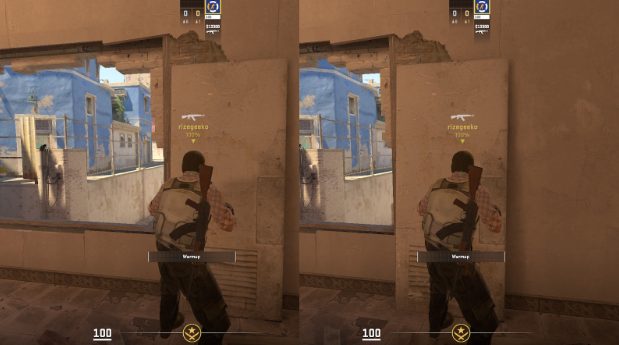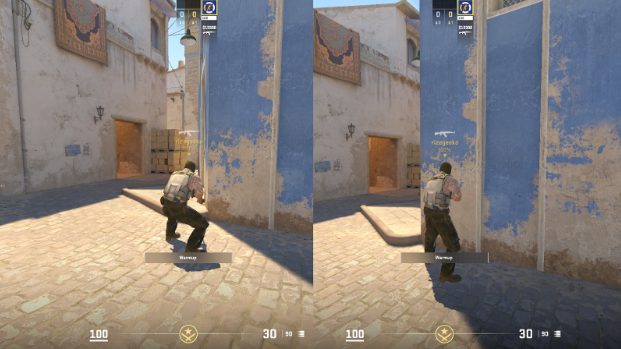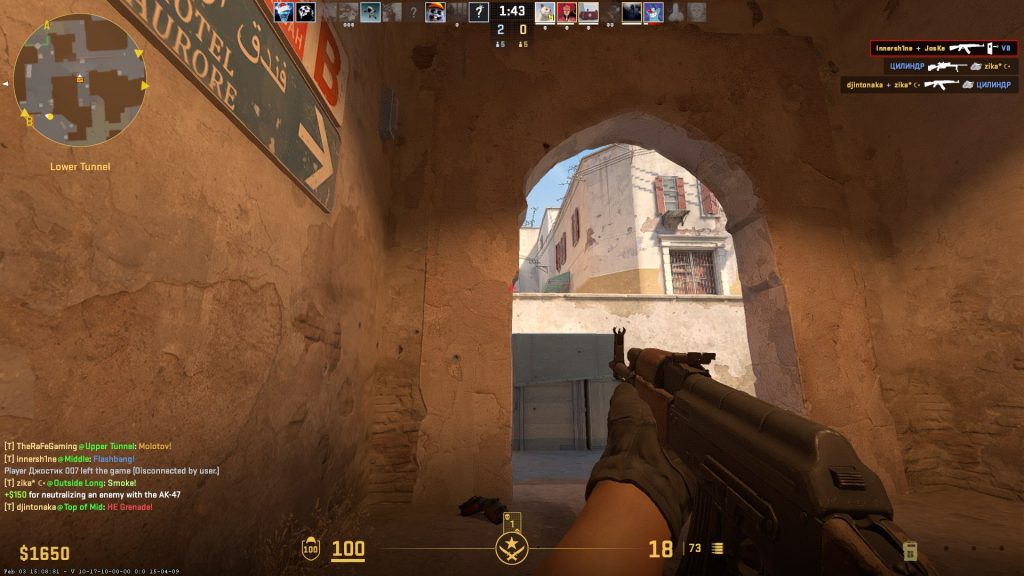Peeking is a core skill in Counter-Strike 2, helping players gather information, challenge opponents, and control critical areas of the map. Knowing how to peek effectively can make the difference between winning and losing an engagement. In this guide, we’ll explore the various types of peeks and explain essential mechanics to help you improve your game and win more games.
Contents
Understanding Peeking in CS2
Peeking in CS2 is about exposing yourself to an opponent’s line of sight in a smart and deliberate way. One of the most basic techniques is the shoulder peek. This move is primarily used to bait out an opponent’s shot or gather intel on their position without fully exposing yourself. To perform a shoulder peek, you quickly strafe sideways, exposing only a small part of your character model, like your shoulder, before darting back into cover. This tactic is great against AWPers or anyone holding an angle, but timing is key overexposing yourself can lead to an easy kill for your opponent.
Types of Peeks
Jiggle Peek
A similar but more active method is the jiggle peek, which involves repeatedly tapping your movement keys to quickly reveal and hide small parts of your character. This technique is perfect for continuously baiting shots or checking an angle without committing fully. A good jiggle peek can confuse your enemy and make it hard for them to land a precise shot. It’s particularly useful against AWPers or in situations where you need to test an angle repeatedly.

Shoulder Peek
The shoulder peek is a straightforward yet effective tactic for baiting out shots or gathering information. It allows you to reveal a minimal part of your model to the enemy, forcing them to react while keeping you relatively safe. This method is particularly useful against AWPers or other high-damage weapons.
The fundamental behind peeking is to maximize the peeker’s advantage, and for the shoulder peek it’s all about hitting max speed on the swing and stopping before reacting to the enemy while pre-aiming the angle. This will make your character harder to track and hit, resulting in a frag for the majority of the time.
However, it’s equally important to have solid movement and counter-strafing for perfect accuracy. Otherwise, your shots are more likely to miss or give enough time for your opponent to readjust and frag you.
Crouch Peek
The crouch peek is another handy tool in your peeking arsenal. This technique catches opponents off guard by changing your elevation as you appear. As you peek, you crouch at the same time, making it harder for the enemy to predict your movement. While effective, this method slows you down and can leave you vulnerable if misused. Use it sparingly and only in situations where surprising your opponent could give you the upper hand.

When you crouch peek, you fully commit to the duel which can either make you the fragger or the fragged on; no in between.
Silent Peek
For a stealthier approach, the silent peek is your go-to. As the name suggests, this involves peeking while walking (holding the Shift key but releasing for half a second to get more speed than walking) to avoid making noise. Silent peeks are great when you’re unsure if an enemy is actively holding the angle or when you want to maintain an element of surprise. This approach works best when you’re confident that the enemy isn’t expecting you.
For example, on A ramp in Mirage, silent peeking is effective because only shifting while clearing the angle will make you slow and easy to react to. Instead, releasing the shift quickly to perform the silent peek will give you the speed advantage.
Swing Peek
The swing peek, on the other hand, is all about aggression. This move involves fully committing to a peek by moving wide around a corner at full speed. It’s designed to overwhelm your opponent, giving you control of the engagement. Swing peeks are particularly effective when you have backup from teammates or when you know you have a health or weapon advantage. However, this technique requires confidence and good aim since you’ll be fully exposed to enemy fire.
The Right-Eye vs. Left-Eye Advantage
One unique aspect of peeking in CS2 is understanding the right-eye and left-eye advantage. Due to the way the game’s first-person viewmodel works, peeking with your right eye exposed gives you a slight edge. When you peek a corner, the side of your character closest to the wall determines how much of your body is visible.

Right-eye peeks are more favorable because your model’s right side is slightly prioritized in the game’s perspective, allowing you to see more of the enemy before they see you. To make the most of this, position yourself so that right-eye peeks are your default approach. Be mindful of left-eye peeks, as they expose more of your body and put you at a disadvantage.
Tips for Effective Peeking
To peek effectively, it’s also important to pair these techniques with good pre-aiming and utility usage. Always aim at likely enemy positions before exposing yourself to an angle. Flashbangs, smokes, and molotovs can make peeking much safer by forcing opponents out of position or obscuring their view. Mixing up your peeks is equally important—if you repeat the same peek too often, experienced players will catch on and punish you. Lastly, in team situations, communicate with your teammates to coordinate peeks and secure trades effectively.
Peeking in CS2 isn’t just about executing these techniques; it’s about understanding the mechanics, reading your opponent, and adapting to the situation. By practicing these skills, you’ll become a more confident and effective player. With time and effort, you’ll find yourself dominating angles and outplaying opponents with ease.



